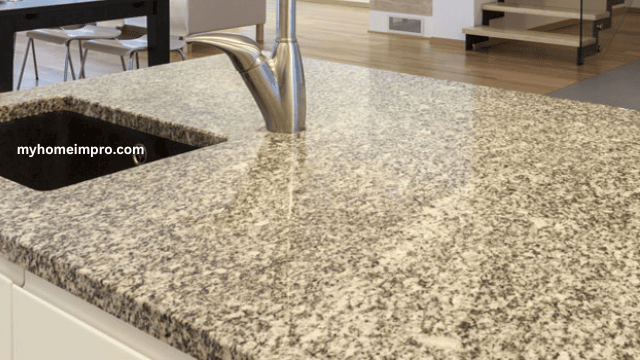Granite countertops are some of the highest quality countertops you can possibly get for your kitchen. However, if you don’t know anything about them in the beginning, you can end up feeling out of the loop and uninformed about the buying and installation process.
Granite is incredibly hard and holds up insanely well over the course of time. Whereas composite countertops tend to get scratched up and slightly stained as the years go by, granite holds up with hard, cold resilience in the face of the sun, knives, bleaching, and staining of all types. They’re simply magnificent. Plastic countertops crack, streak, and bubble under the sun and are utterly useless unless that it is your only option, financially. Let’s look at how granite countertops can be evaluated and bought for a good price, with a good, strong installation, and with you knowing what’s actually going on.
Understand The Basic Cost of Granite Coutertops and Tile:
Table of Contents
Pricing (for Tile and Per Square Foot)
Granite comes in two forms: Slab or Tile. Slab countertops are the most expensive and granite Granite countertops cost can be anywhere from $57 to $160 per square foot. This adds up over time, but it can be a really worthy investment if you want a really professional-looking kitchen to cook with. However, you may want granite tile, instead.
Tile in granite is a lot cheaper than the cost per square foot of granite slab. Granite tiles tend to run between $10 and $20 per square foot, plus the cost of installation, which runs it up to about $20 to $40 per square foot.
Granite slab must be cut precisely to fit your countertop and you can have any leftover pieces saved to make cutting boards and coasters and matching decorative kitchen tiles. You will most likely have to pay for the whole slab, though. Buying tiles can cut your cost to exactly the space needed to cover your countertops.
A local stone yard will do two things: Keep the cost of your granite down and install it for you. And, they will be local so you won’t have to pay extra to have it shipped in.
Sizing (Thickness and Area Coverage)
Bathroom vanities and lavatory sinks tend to be 3/4″ thick for granite countertops. For kitchens, the ranges are much thicker and are typically around 1 1/4″ thick.
What do you do with this information? It tells you how much weight, cutting, scraping, and overall temperature and humidity changes affect your countertops. In kitchens, the temperature and treatment options are so varied that your countertops need to be really thick. Also, the slabs cover a much larger area, so they must be more reliable and very well supported underneath at every possible opportunity. Your contractor will make sure of this.
Granite countertops for the bathroom are much easier and cheaper. However, a nice, big slab for the kitchen (or multiple slabs) will mean that you must have it precisely measured, cut, and installed with cutout space for the kitchen sink and other cutout areas.
Quality Ranges (What to Look for, What to Avoid)
You will need to think about who is using this granite countertop says (ConsumerReports). Is it a retirement gift for yourself and your spouse? Is it something your grandkids will use a lot? Are you buying it for your very rowdy family? This matters because the wear and tear you have on your countertop will require different composites.
You have two main quality options when it comes to granite tile and slab. Very high-cost granite, which is mostly made up of the really hard material and low-cost slab and tile which have a greater portion of the soft material.
The question you need to ask yourself is: Is this likely to get cut and chipped over time? Do my friends and family tend to do that to my countertops? It is far better (and far more cost-efficient) to buy the harder material now than to have to replace it with another countertop in five to eight years. Simply buy the good stuff today and get the best. That way, it will last for many decades to come.
Coloring and Color Matches
Granite countertop color is the most important part of your purchase (next to quality, of course). We have some of the best advice for you here.
There are a couple of universal statements that can be made about home decorating. The first is: Though darker colors are in style, this purchase must last through five to eight different trends. Use lighter colors for longterm trend mobility.
Second, avoid green colors at all costs when decorating around food. The human imperative to avoid things of a green nature (besides lettuce) is deeply ingrained in us. It goes back to the fact that dead bodies and rotting corpses are green and purple. When it comes to places where you prepare and serve food, you will always feel more comfortable around sandy colors, pink colors, and gray granite colors. Choose one of these for your color scheme for a pleasing, all-seasons overall look.
Matte versus Glossy (Where to Find the Good Stuff)
You would think that glossy granite is much more expensive than matte granite. The opposite can easily be true, depending upon where you are buying it from. Because glossy is the most widely used (by far), you will pay a lot less for it in your overall choices. You will need to think about the overall “look” and “feel” of your countertop. Are there a lot of windows nearby? Is there a wall of light that often gets reflected off of your current countertop? Do you like the glossy shine or do you prefer something that doesn’t reflect light as well?
While you are asking yourself these questions, think about the colors you have chosen for your granite countertop. There is a rule that may help you: Light colors look best with high light reflection (in other words, go glossy) and dark colors show up the most with low light reflection (in other words, use matte with dark granite colors). This is because dark colors will reflect light just as much with a gloss finish. If you want a countertop, tabletop or other surface areas to show their dark colors, you would do better with a matte finish.
Installation Process
Some people try to install their granite countertop themselves. This is not a wise idea. The reason is that granite is very heavy and hard. You will want someone else liable for a dropped slab and you will want someone else custom fitting it to your countertops. Also, a real contractor will know if your current setup is solid enough to hold the weight of a granite countertop or not. And they will know what to do to shore up your structure so that the extra weight is safely and securely supported.
Another reason to use a contractor is that they can tell if something doesn’t look right or not. They have a “feel” for high-quality workmanship and they will be able to tell you if something is fishy about the cut, composition, or process. That’s valuable information to have, especially if this is your first granite countertop.
In conclusion, remember that your bathroom lavatories and kitchen butcher block can be hard, crafty, and stylish. You can have your granite countertop and still be able to afford other adjustments you want to make to your attractive space. Follow our suggestions to keep your job quick, clean, and at a reasonable cost. Happy Measuring!

